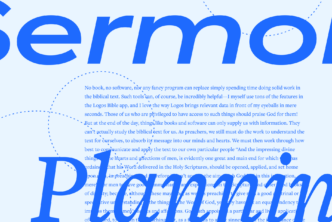The Bible isn’t a collection of inspirational thoughts like pearls on a string. The human authors present logical positions and arguments. One of the most important aspects of Bible study is understanding an author’s line of thinking, and Logos makes this easy with the Propositional Outlines Visual Filter.
With this visual filter, you can see the structure of the text and discover relationships between propositions—the statements (usually sentences) that the author uses to assert something as true.
You can apply the Propositional Outlines Visual Filter to view your text in outline form. Scholars at Logos have provided additional assistance by categorizing each proposition. This helps you see relationships between statements. For example, with this filter, you can easily spot Paul’s main concluding thought in 1 Thessalonians or analyze the complex structure of Exodus 9:13–19.
You can still access other tools and resources from this view by right-clicking any word in the text and opening the Context menu just as you would from the text in its standard format.
Watch this video to learn more about using the Propositional Outlines Visual Filter in 1 Thessalonians 4:1–6:
The Propositional Outlines Visual Filter is available in the Logos 8 Bronze Complete Upgrade and the Logos 8 Bronze Feature Upgrade.
Visit the Logos Help Center for more on how to get the most out of your Logos Bible Software.
Or explore these helpful resources:
- Discourse Grammar of the Greek New Testament: A Practical Introduction for Teaching and Exegesis by Stephen Runge
- Lexham Discourse Bundle (12 vols., 2 courses) without Datasets by Steven E. Runge; Christopher J. Fresch; Joshua R. Westbury
- Donald Hagner’s New Testament Exegesis and Research: A Guide for Seminarians






